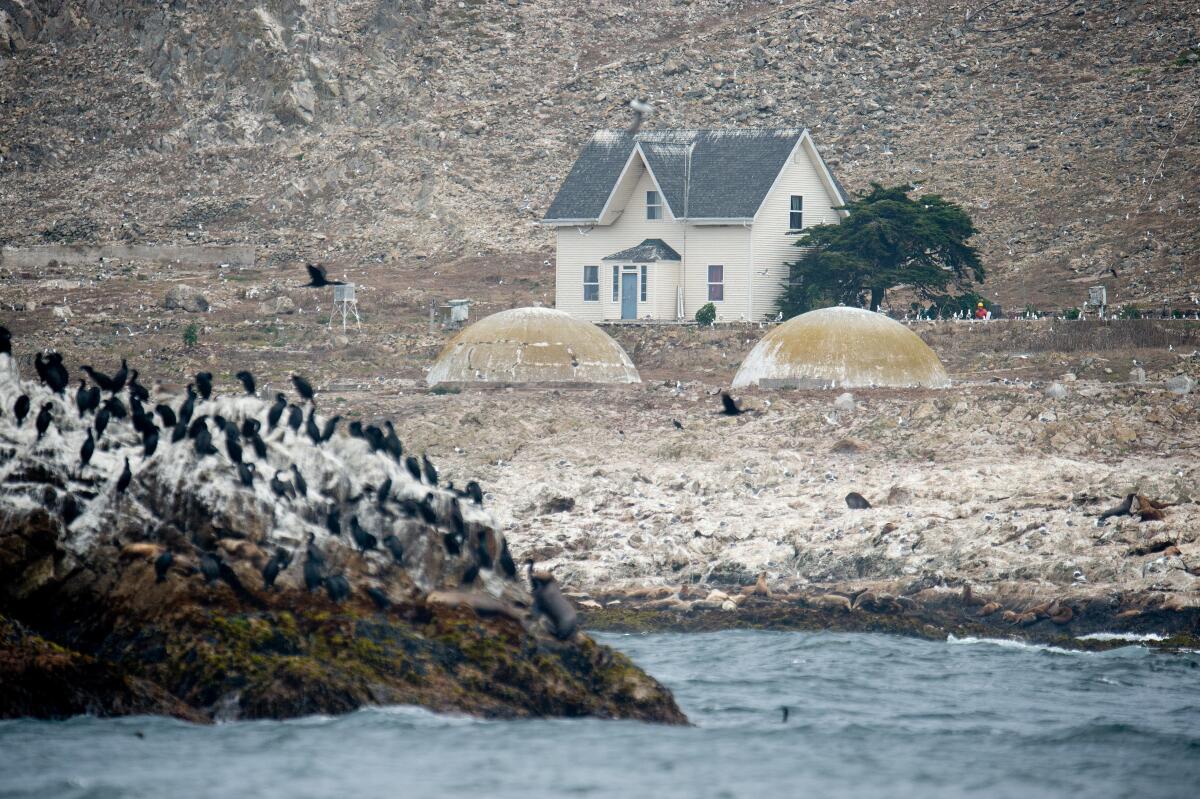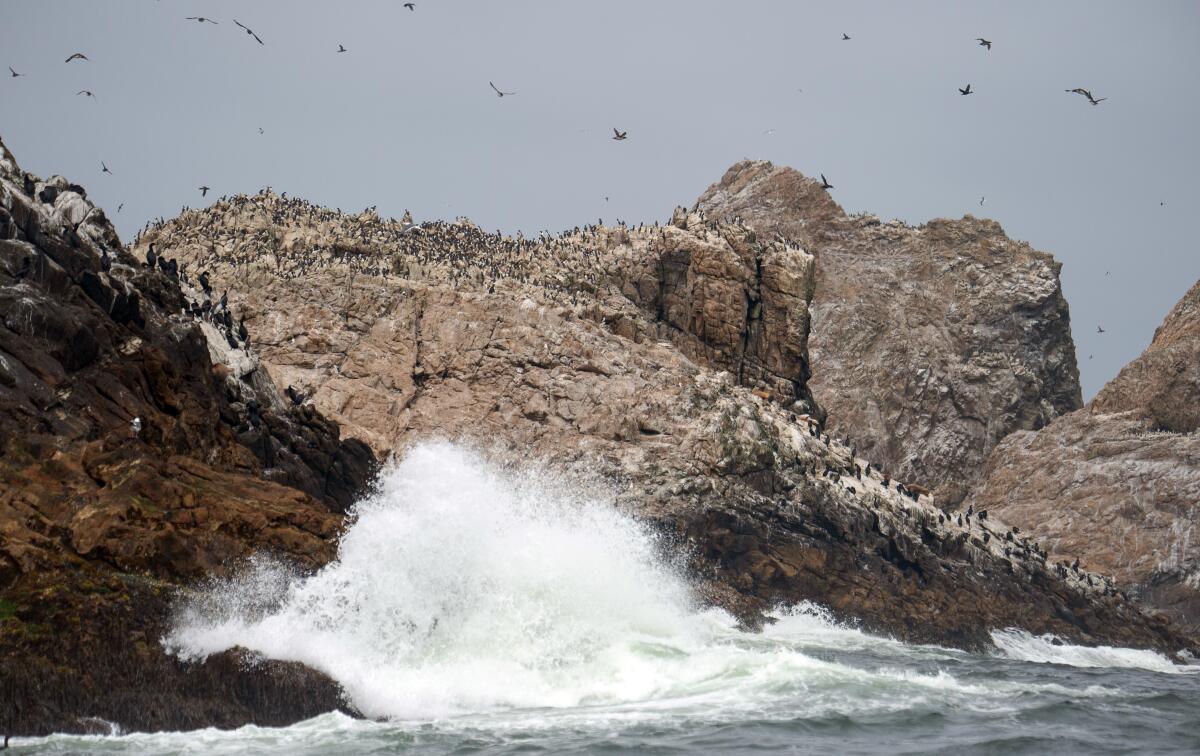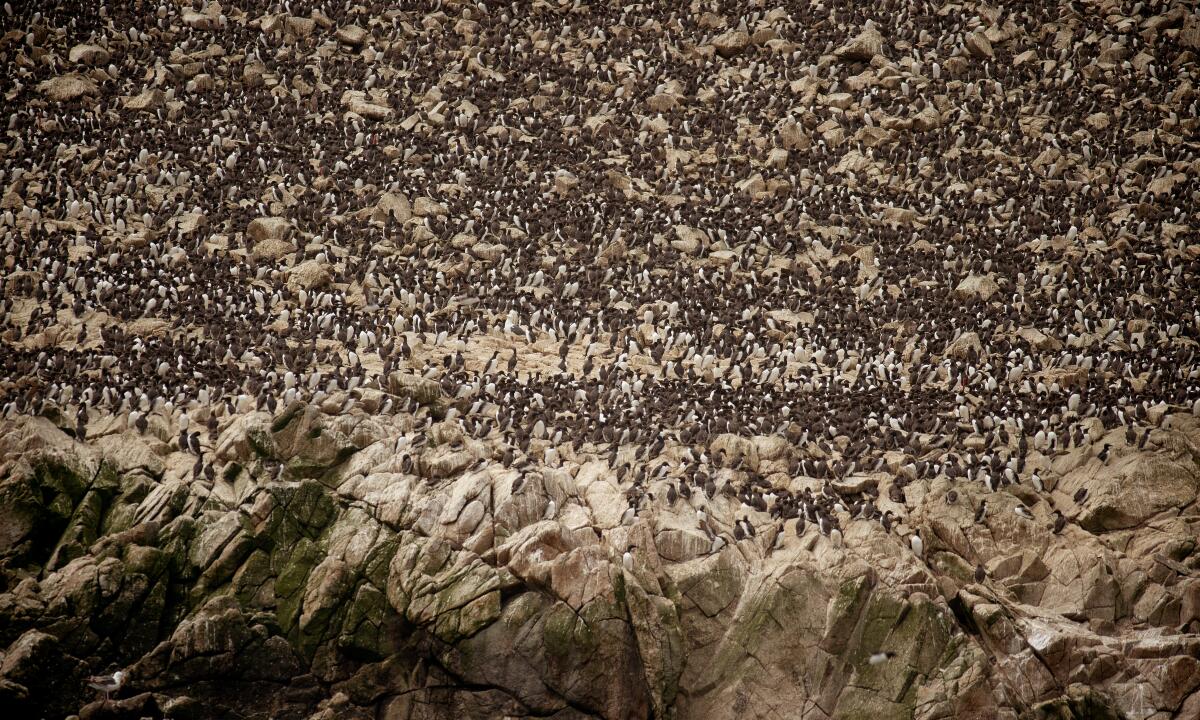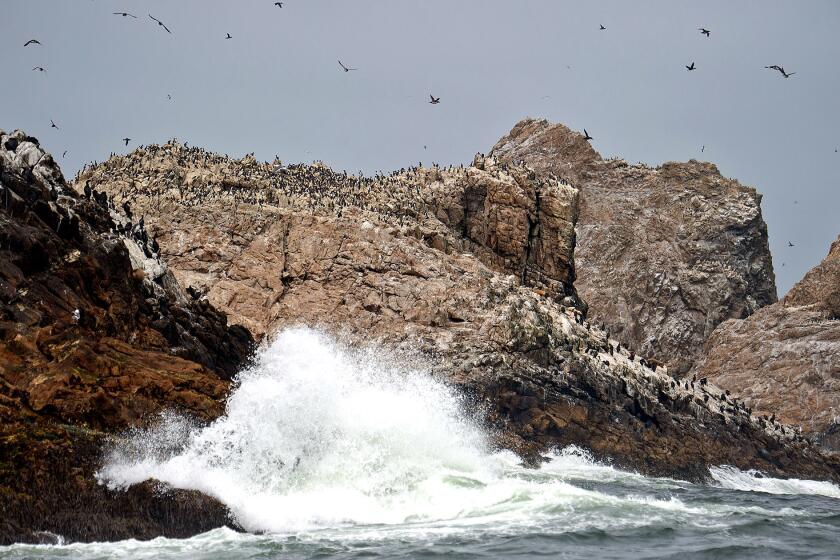Column: The U.S. wants to air-drop poison on Farallon Islands mice. Not everybody hates the idea

The mice of the Farallon Islands think theyâve got it made.
Theyâre out there with ocean views in every direction, picnicking on plants, salamanders and insects like thereâs no tomorrow.
But there might not be a tomorrow for the lowly rodents, because the United States government is gunning for them.
The Fish and Wildlife Service has found the mice indirectly guilty of serial murder in the death of seabirds and sentenced them to death by poisoning, with a key review of the extermination plan up this week before the California Coastal Commission.
Each year, burrowing mainland owls fly to the Farallones to feast on the teeming mouse population. When the mice population drops, as it does seasonally, the owls then eat the eggs of the ashy storm petrel, a bird some consider a future candidate for the endangered species list.
So the mice are essentially co-conspirators in the demise of the storm petrels, and the question is: How do you poison 60,000 or so mice who live on an island 30 miles off San Francisco?
You load helicopters with roughly 2,800 pounds of pellets laced with a rodenticide called brodifacoum and air-drop the load onto the island, a lethal last supper for the unsuspecting target audience.
Some environmentalists, unsurprisingly, are going out of their minds.
âThey have picked the worst chemical to use in the worst possible place â the most protected piece of ocean on the planet,â said Richard Charter, noting that the islands are designated as a national marine sanctuary and California Marine Protected Area.

Charter, senior fellow at the Ocean Foundation, predicts the anti-coagulant poison â which he notes is so dangerous, itâs banned on land in California â will get into the food chain and wreak havoc. We shouldnât be surprised, he said, if we see âseagulls staggering around Fishermanâs Wharf and dying there.â
But the issue has been around for a decade or so and is more complicated than it might appear at first glance, with bird lovers and conservationists among the supporters of the federal airdrop plan.
âPoint Blue would like to voice our strong support for this project,â says a plea on the website of Point Blue Conservation Science, which partners with the federal government to manage the islands. The organization contends the nonnative, invasive mice, likely introduced by sailing vessels in the 19th century, are messing with the natural environment and threatening the ashy storm petrel, among other seabirds.
As Fish and Wildlife puts it in arguing for the poison plan, âThe only way to allow the ecosystem to recover is to ensure 100% eradication of the house mice. The survival of even a single pair of mice jeopardizes the whole project, as the mouse population can recover incredibly quickly.â
The federal government hopes to begin its aerial assault next fall, and the staff of the California Coastal Commission â which generally stands strong and tall when it comes to protecting sensitive marine habitat â has offered its conditional support.

In a lengthy report based on years of study, the Coastal Commission staff concluded that the poison â applied primarily to higher elevations on the islands â will not significantly harm island or marine life other than the disruptive mice. And a staffer tells me thatâs been the case in other parts of the world where the same procedure has been used.
That doesnât mean, however, that coastal commissioners will rubber-stamp the staff recommendation on Thursday, when theyâre expected to put the matter to a vote. In 2019, the plan was withdrawn by the feds when it looked as though commissioners might balk at the use of the banned rodenticide.
And the critics are prepping to testify this week, fighting as they have for a decade. Alison Hermance, of the San Rafael animal hospital WildCare, doesnât trust the Fish and Wildlife Serviceâs âhazingâ plan, in which it will use flags, lasers, pyrotechnics and loud booms to scare birds away from the poison pellets.
âItâs hard to deter a hungry gull,â Hermance said, noting how bold they are if you try to eat something on the beach.
If gulls or other birds get the poison in their systems, Hermance fears, itâs going to travel. She said an alarming percentage of the animals brought to WildCare are found to have environmental poisons in their systems, âand a large number of them die.â
âAnd then,â Hermance said, âthereâs the optics of saying to people that itâs OK to use these poisons.â
So what does she recommend instead?
Remove the owls, Hermance said. Or go all in on a pest-management plan that includes trapping of mice and even the use of rodent contraception â alternatives that have been considered and, for now, dismissed by both Fish and Wildlife and the Coastal Commission staff.
As for using contraception as a rodent buster, who you going to call?
Dr. Loretta Mayer, a University of Arizona researcher who developed a liquid bait contraceptive and has worked on rodent control for roughly a quarter of a century.
âIâve been going all over the globe,â said Mayer, who told me she helped decrease the rodent population in Indonesia, among other places, where they were feasting away in rice fields.
Melrose Action raised $30,000 for license plate readers, including $10,000 from L.A. City Councilman Paul Koretz. The readers start going up this week.
Mayer, who has offered her insights to the Coastal Commission but hasnât chosen sides on the Farallones project, told me it wouldnât be easy or effective to use liquid contraceptive bait there. But a solid form, about the size of a Rice Krispie treat as she described it, is in development.
After years of battles with rodents and other pests destroying my garden, Iâd be first in line to buy rodent birth control. I can also recommend cayenne pepper as a deterrent, but Iâm not sure how effective it would be tossing it out of a helicopter, or where the offended mice would go.
If youâre curious as to how this plays out, you can tune into the aerial rat patrol hearing Thursday by going to coastal.ca.gov. I also recommend tuning in Wednesday, when the commission takes up a privacy case in Rancho Palos Verdes.
Two homeowner associations worried about crime got city approval for a proposal to install security cameras designed to read license plates for the sake of monitoring comings and goings in whatâs designated as the Coastal Zone. The Coastal Commission staff, dedicated to defending the right of coastal access for one and all, is pushing back.
âThe proposed development sends a message that the public cannot be trusted in coastal areas where they do not live,â said the staff report.
That drew a rebuke from Rancho Palos Verdes City Manager Ara Michael Mihranian, who spoke up for residents.
âAs public officials,â Mihranian wrote, âwe have the responsibility to protect the public and preserve their quality of life, and that includes feeling safe. The proposed Flock Cameras are intended to protect the public and deter crime â not to prevent the public from accessing the coast.â
Yeah, yeah, yeah, yeah.
Next thing you know theyâll be dropping nets from helicopters.
More to Read
Sign up for Essential California
The most important California stories and recommendations in your inbox every morning.
You may occasionally receive promotional content from the Los Angeles Times.













